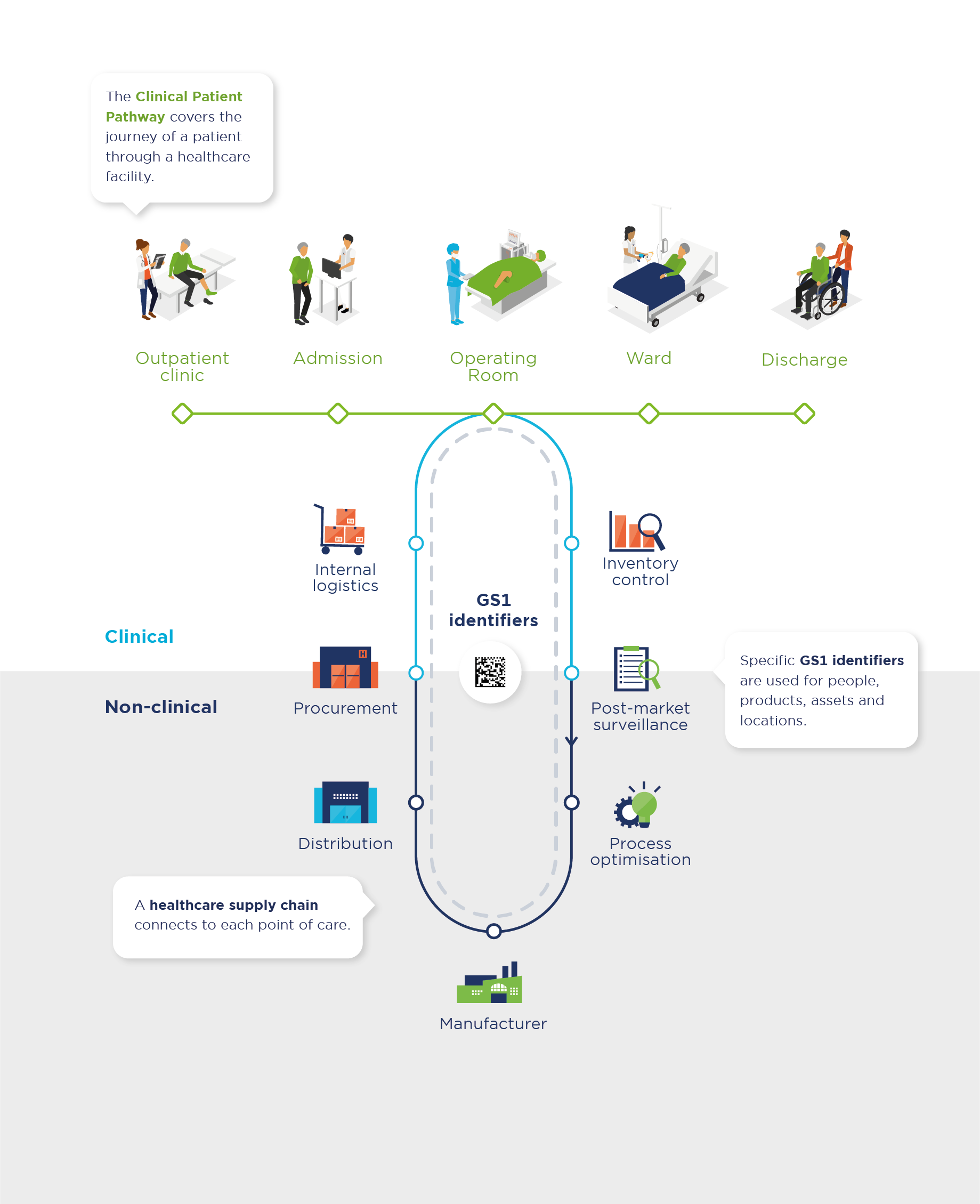Healthcare organisations strive to deliver the best and safest care for their patients in the most efficient way.
Therefore, it is critical that the right medical staff, the right assets and the right products are in the right location at the right time for the right patient.
A common language helps healthcare organisations to make this possible across the Clinical Patient Pathway. GS1 standards for identifying, capturing and sharing information, are a common language that all healthcare organisations can use to ensure quality healthcare and reliable exchange of information between IT systems.
Learn more?
Discover our leaflet document and animation

Improve patient safety and enhance operational efficiency using GS1 standards
The Clinical Patient Pathway
The Clinical Patient Pathway covers the journey of a patient through a healthcare facility. At each point of care products, assets and medical devices are ordered, delivered, used or returned. Medication is prescribed and information is exchanged.
Benefits for all stakeholders
Throughout the Clinical Patient Pathway specific GS1 identifiers are used for people, products, assets and locations. The use of these identifiers enables the connection of the shared healthcare supply chain to clinical work and outcomes by enabling full traceability. This is of interest for all stakeholders in healthcare. Together they can create safer and more efficient care.
The shared healthcare supply chain
A healthcare supply chain connects to each point of care. This supply chain is a shared process between clinical and non-clinical stakeholders.

People
Uniquely identify patients & service/ healthcare providers with GSRN or Global Service Relation Number

Products & Assets
Uniquely identify products with GTIN or Global Trade Item Number and assets with GIAI or Global Individual Asset Identifier

Locations
Uniquely identify locations with GLN or Global Location Number






